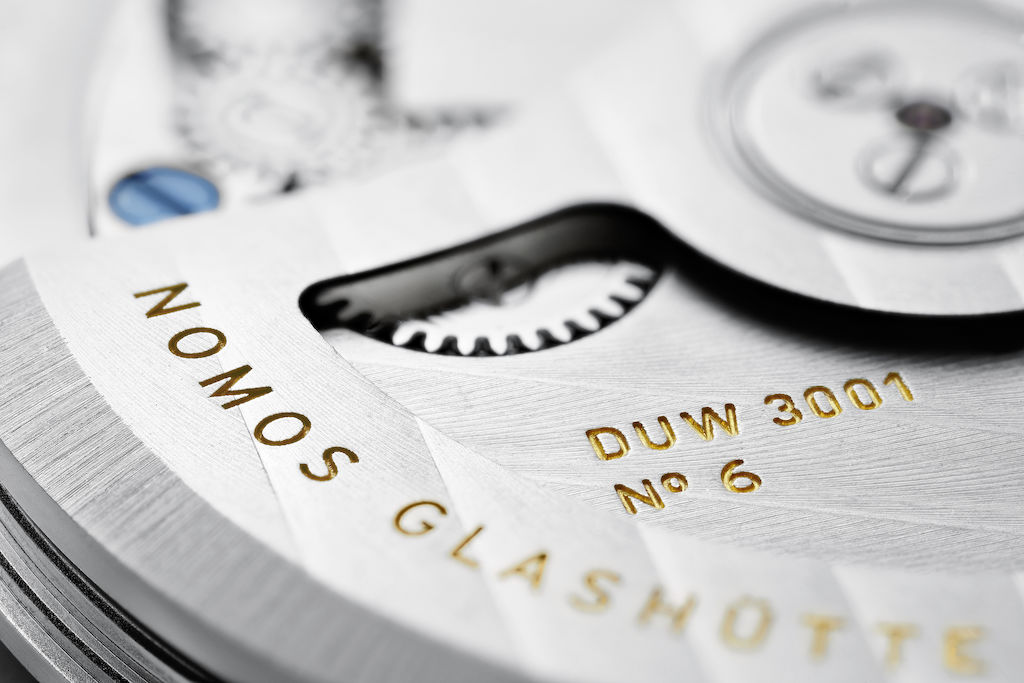This caliber could hide itself from view behind a stack of nine postage stamps. At 3.2 millimeters in height, DUW 3001 is thinner than everything else in the world of watchmaking that self-winds and is produced in large-scale series—and yet it is still highly precise. How was this even made possible? With some Glashütte style sleight of hand, you could say. Virtually every component was assembled between the bottom plate and the three-quarter plate—in a space which on average is only one millimeter high.
One particularly challenging aspect of constructing such a thin caliber is the necessitation of a thinner main spring. It has—due to it consisting of less material—a weaker tensile force value. To make up for this deficit the caliber’s efficiency was increased: to (for experts an almost unbelievable figure) 94.2 percent. There is effectively only 5.8 percent energy loss due to friction—normally this figure is around 20 percent. Despite a reduced design height DUW 3001 offers the very best caliber performance.
One more upside: DUW 3001 is equipped with a very special heart, the now renowned NOMOS swing system. The in-house built escapement, with which NOMOS Glashütte broke the Swiss monopoly in 2014, ensures the highest rate of accuracy: During the chronometer testing the NOMOS calibers fitted with the proprietary swing system achieved excellent results from the get go.
This caliber also won’t be beaten when it comes to efficiency—since the rotor (that oscillating component in the shape of a large piece of cake) provides the exact amount of energy to the barrel needed for the movement to do its job. Once it is fully wound, the NOMOS rotor brake comes into play, which protects the whole automatic mechanism and the barrel and reduces wear to a minimum.
And it’s only natural that this motor features a succession of famous Glashütte characteristics, which are recognizable in watches born of this noble heritage: three-quarter plate, Glashütte ribbing, Glashütte sunburst, tempered blue screws—and so on.
